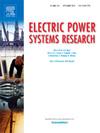Integrating autoencoders to improve fault classification with PV system insertion
IF 3.3
3区 工程技术
Q2 ENGINEERING, ELECTRICAL & ELECTRONIC
引用次数: 0
Abstract
The extensive integration of distributed generation (DG) units leads to significant changes in the operation of power distribution systems (PDS). Integrating DG units contributes to meeting the growing energy demand, diversifying the energy matrix, and reducing power grid losses. In contrast, they can affect conventional protection systems in power grids by altering current flow, which affects the characteristics, direction, and amplitude of short-circuit currents. Consequently, improper operation of protection equipment can cause false positives, negatively affecting the detection, classification, and reliability of the power grid. This study addresses fault classification in PDS, considering the extensive integration of DG units, specifically PV systems. PDS is evaluated at various levels of PV insertion using different fault scenarios modeled in the IEEE 34-bus test system. This includes five scenarios with variations in the PV system insertion. Autoencoders are applied during the pre-processing phase, while eleven different algorithms are used in the classification stage to identify fault types. They can improve the performance of the classification system by reducing the size of input signals and extracting the most relevant features. The results reveal that the K-nearest neighbor (KNN) and random forest (RF) algorithms demonstrate the best performance, maintaining a minimum accuracy of 95.42% in all scenarios.
求助全文
约1分钟内获得全文
求助全文
来源期刊

Electric Power Systems Research
工程技术-工程:电子与电气
CiteScore
7.50
自引率
17.90%
发文量
963
审稿时长
3.8 months
期刊介绍:
Electric Power Systems Research is an international medium for the publication of original papers concerned with the generation, transmission, distribution and utilization of electrical energy. The journal aims at presenting important results of work in this field, whether in the form of applied research, development of new procedures or components, orginal application of existing knowledge or new designapproaches. The scope of Electric Power Systems Research is broad, encompassing all aspects of electric power systems. The following list of topics is not intended to be exhaustive, but rather to indicate topics that fall within the journal purview.
• Generation techniques ranging from advances in conventional electromechanical methods, through nuclear power generation, to renewable energy generation.
• Transmission, spanning the broad area from UHV (ac and dc) to network operation and protection, line routing and design.
• Substation work: equipment design, protection and control systems.
• Distribution techniques, equipment development, and smart grids.
• The utilization area from energy efficiency to distributed load levelling techniques.
• Systems studies including control techniques, planning, optimization methods, stability, security assessment and insulation coordination.
 求助内容:
求助内容: 应助结果提醒方式:
应助结果提醒方式:


